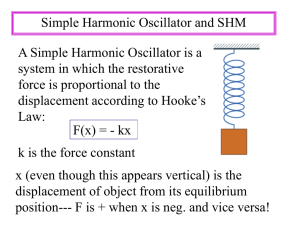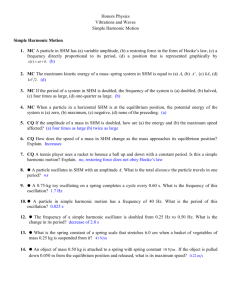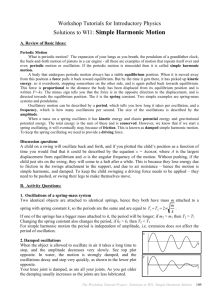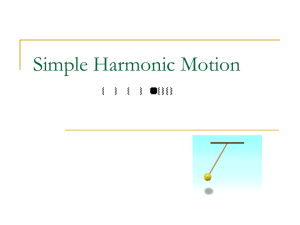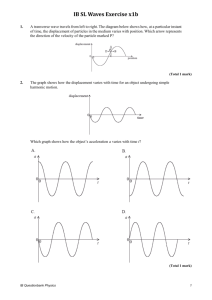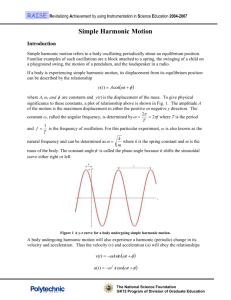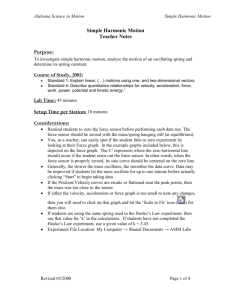Topic 4 Part 1 Review Questions
advertisement
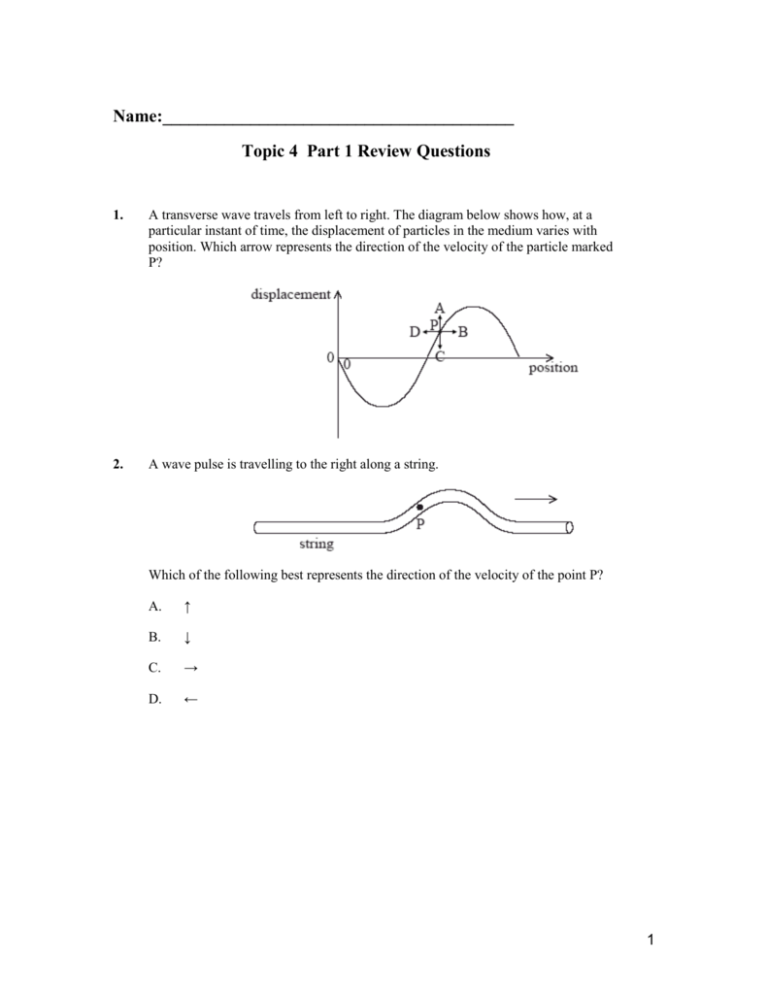
Name:________________________________________ Topic 4 Part 1 Review Questions 1. A transverse wave travels from left to right. The diagram below shows how, at a particular instant of time, the displacement of particles in the medium varies with position. Which arrow represents the direction of the velocity of the particle marked P? 2. A wave pulse is travelling to the right along a string. Which of the following best represents the direction of the velocity of the point P? A. ↑ B. ↓ C. → D. ← 1 3. The graph shows how the displacement varies with time for an object undergoing simple harmonic motion. Which graph shows how the object’s acceleration a varies with time t? (Total 1 mark) 2 4. Which of the following electromagnetic waves has a frequency greater than that of visible light? A. Ultraviolet B. Radio C. Microwaves D. Infrared (Total 1 mark) 5. A particle oscillates with simple harmonic motion with period T. At time t = 0, the particle has its maximum displacement. Which graph shows the variation with time t of the kinetic energy Ek of the particle? 3 6. An object is undergoing simple harmonic motion with light damping. The natural frequency of oscillation of the object is f0. A periodic force of frequency f is applied to the object. Which of the following graphs best shows how the amplitude a of oscillation of the object varies with f? 4 7. The graph shows measurements of the height h of sea level at different times t in the Bay of Fundy. Which of the following gives the approximate amplitude and period of the tides? Amplitude Period A. 6.5 m 6 hours B. 13 m 12 hours C. 6.5 m 12 hours D. 13 m 6 hours 5 8. The graph shows how the velocity v of an object undergoing simple harmonic motion varies with time t for one complete period of oscillation. Which of the following sketch graphs best shows how the total energy E of the object varies with t? 6 9. 10. A force that varies sinusoidally is applied to a system that is lightly damped. Which of the following must be true of the force for resonance to occur? A. It must always be in anti-phase with the oscillations of the system. B. Its direction must always be in the direction of motion of the oscillations of the system. C. Its frequency must be equal to the frequency of oscillation of the system. D. Its amplitude must be equal to the amplitude of oscillation of the system. Which of the following is a value of wavelength that is found in the visible region of the electromagnetic spectrum? A. 4 × 10–5 m B. 4 × 10–7 m C. 4 × 10–9 m D. 4 × 10–11 m (Total 1 mark) 7 11. The graphs show how the acceleration a of four different particles varies with their displacement x. Which of the particles is executing simple harmonic motion? 8 12. Which of the following graphs shows the variation with displacement x of the speed v of a particle performing simple harmonic motion. 13. A particle performs simple harmonic oscillations. Which of the following quantities will be unaffected by a reduction in the amplitude of oscillations? A. The total energy B. The maximum speed C. The maximum acceleration D. The period 9 14. For a system executing simple harmonic motion, the restoring force acting on the system is proportional to the A. displacement of the system from equilibrium. B. amplitude of oscillation. C. elastic potential energy. D. frequency of oscillation. (Total 1 mark) 10 15. This question is about simple harmonic oscillations. A longitudinal wave travels through a medium from left to right. Graph 1 shows the variation with time t of the displacement x of a particle P in the medium. Graph 1 For particle P, (i) state how graph 1 shows that its oscillations are not damped. (ii) calculate the frequency (iii) calculate the magnitude of its maximum acceleration. Remember : 2 T a = - ω2 x (iv) state its direction of motion at t = 0.12 s. (1) 11

